Philadelphia was a top rock and roll recording hub during the late 1950s and early ‘60s, hosting several highly influential labels that dominated the charts. It didn’t hurt one bit that Dick Clark’s ABC-TV show American Bandstand aired out of Philly; the program could propel a young singer to national stardom virtually overnight and often did.
In a lot of ways, Philly’s rock and roll legacy begins with Charlie Gracie. He was the City of Brotherly Love’s first homegrown rocker to break through on a major scale with the irresistible “Butterfly,” which topped the pop hit parade in the spring of 1957 on Bernie Lowe and Kal Mann’s fledgling Cameo Records. But the guitarist’s story harks back before Elvis, Chuck Berry, and Jerry Lee, as far as Bill Haley and His Comets in their pre-hit days.
At age 16, Gracie was one of a mere handful of young white mavericks on the East Coast to dive headfirst into rock and roll during the early 1950s, when he waxed his first platter, the self-penned rocker “Boogie Woogie Blues,” for Graham Prince’s Cadillac Records. His encore for the label, another original, was titled “Rockin’ An’ Rollin’,” long before the term was in currency. Charlie is a genuine rock and roll pioneer whose lead guitar work is as every bit as exciting as his vocals. And he’s planning on rocking up a storm at this year’s Stomp.
Born Charles Graci in Philly on May 14, 1936, he grew up poor. “I lived in a little row house in South Philadelphia with my mother and father and my two younger brothers,” Charlie says. “When I was 10, we moved two doors away from my grandparents. And it had a bathroom, it had a toilet. My God, I thought I’d died and went to heaven!”
There may not have been much money floating around the Graci household, but there was a lot of love. “We never went to bed hungry,” he says. “We always had good food on the table, a nice clean bed. A nice clean home.” And there was plenty to listen to. “Radio was king. You put the lights out, you laid on the couch, and boy, your imagination would run away with you.” Sam Graci, Charlie’s father, knew how important music could be in his son’s maturation.
“My dad and I, we took a walk down South Street, which became famous in song later,” he says. “When I was a kid—in 1946, I was 10 years old—there was a mill area where people shopped for clothing and shoes. Haberdashers, all that stuff. And it had a lot of pawn shops. So he had saved up $15.
“Every time we’d pass a pawn shop, he’d hesitate. I was the first-born of three sons. And finally he said, ‘The hell with the suit, Charlie. Pick an instrument out and make something of yourself. I don’t want you to work like a jackass, like I have all my life,’” says Gracie. “I said, ‘Well, how about a trumpet like Harry James?’ ‘Naaah, don’t get a trumpet like Harry James. You’ll blow your brains out. Get a guitar!’ That’s how much choice I had, right? So I got the guitar. He knew three or four chords. A friend of his knew maybe 20 or 30 chords. And I picked it up. It came easy to me.
“He said, ‘Well, if you’re going to be a musician, you get a teacher. You learn to play music. You learn to play the right way.’ So I studied for four or five years with a man named Anthony Panto, who was related to the great Joe Venuti, the great jazz violinist,” he says. “He was a wonderful teacher. And I studied with him, and by the time I was 15 years old, he said, ‘Charlie, I’ve taught you everything I know. You’re on your own. You play as good as I do!’
“So I did all kinds of amateur things,” says Gracie. “I was a kid, so you play weddings and so forth. So finally I did a show called The Paul Whiteman Show, which came out of channel 6 in Philadelphia. It was an ABC affiliate. Paul Whiteman was a very famous orchestra leader in the ‘30s and ‘40s.” On one episode, he performed Haley’s “Rock The Joint.”
“I went on this show, and I was a five-time winner. I got a $100 bond, I got a 45 record changer. Every week, I’d win something. And if you’d win five weeks in a row, you’d get a family refrigerator. So I won the first refrigerator we had in our home. We had an icebox before that. So while I’m on this show—it was simulcast, television and radio—this guy was driving in from New York. He had a company on Broadway called Cadillac Records. Funny, right? And I guess he’d heard something unique. And the next day we got a telegram, because we didn’t have a phone then, and he said, ‘I would like to record you. My name is Graham Prince.’ That was his name. And he said, ‘I have a record company, and I hear something. I hear talent there.’
“This is like late 1951, early 1952. So I went into New York, and I cut maybe six sides for him. Had no big success, but it got me a chance to start working the nightclub circuit and all that stuff, even though I was a kid. I did the original Bandstand when Bob Horn was the host, before Dick Clark.” Charlie used session musicians on his first records. “I had a couple of great musicians on the date—a (bassist) by the name of Bobby Haggart. He had a big record in the ‘40s called ‘Big Noise From Winnetka,’” he says. “And a guy named Luther Henderson, who was a great black jazz pianist. And a soprano saxophone. That was it.”
“Boogie Boogie Blues,” as Cadillac titled it on the label (Charlie calls it “Boogie Woogie Blues”), credited the newcomer as Charlie Graci (a snazzy revival of “I’m Gonna Sit Down And Write Myself A Letter” adorned the flip). “This man, when he recorded me and managed me for a couple of years, he said, ‘Charlie, it’s hard to pronounce,” Gracie says. “Once you put an ‘e’ on it, it makes it easier to pronounce.’” From “Rockin’ An’ Rollin’” on, that’s how it was spelled. “From a Sicilian, I became Scotch-Irish!” laughs Gracie.
“Rockin’ An’ Rollin’” fattened Charlie’s backing combo with drums and a jazzy vocal group, while a swinging “All Over Town” on the other side found room for the saxist to make his presence felt. “T’ain’t No Sin In Rhythm” and “Say What You Mean” was Charlie’s final Cadillac coupling. Both are pseudo-spirituals enhanced by the backing choir, though Gracie’s hot guitar and the booting tenor sax solos ensured that these sides were aimed at the pop market.
http://www.youtube.com/watch?v=LJbWphC66G0
Philadelphia-based 20th Century Records, a subsidiary of the Gotham imprint, was Charlie’s next stop in 1954 or thereabouts. “They had their own pressing plant,” he says. “The man’s name was Ivin Ballen who owned it. And he recorded me. I did four or five songs with him.” The stop-time jump “Head Home Honey” and its romping flip “My Baby Loves Me,” the latter self-penned, encompassed his first 20th Century offering.
Charlie encored in the summer of ’55 with the relentless “Wildwood Boogie” and his own male vocal group-backed “Honey! Honey!,” his horn-fueled studio band christened the Wildcats (a nice version of “Frankie And Johnny” was left on the shelf). “They were studio guys too, local guys from Philly,” he says. “They were all decent musicians. And if you notice on a couple of those records, there wasn’t even any bass.” All of Gracie’s early singles boasted blazing guitar solos. “It’s a funny thing. I never think them out. It’s just whatever comes into my head, that’s what I play. And that seems to have worked so far,” he says. “I was always taught to play clear. When you play something, don’t get too busy. He said, ‘Whatever you play, play it clear.’ It’s like a lyric: when you sing it, make sure they can understand the words.
“I had my own style of playing. I was always a solo artist. I never had a band ‘til the last maybe 20 or 30 years. And I would play nightclubs where the band would come off. I would play the 20-minute lull while the band was taking a rest.” Gracie didn’t need a band to dish up rock and roll. “A guy said, ‘What have you got, a trio in there?’ He said, ‘No, it’s a guy that’s by himself! He sings and plays the guitar!’” says Charlie. “So I already had that backbeat thing going for me. It’s the way I play guitar, evidently.”
They may not have charted, but Gracie’s first five singles turned some heads. “A lot of those songs, people ask for ‘em today. It’s hard to believe, because I didn’t think that many people heard them,” he says. “They’re not great tunes or anything, but for a 15-16 year-old kid, a 17-year-old kid, I thought we were doing pretty good.”
The turning point came in late 1956, when Paul Whiteman’s former pianist came to Charlie with a proposition. “This fellow named Bernie Lowe wanted to start a record company called Cameo Records. And he was looking for a tall, sexy Elvis-type guy. Evidently, he couldn’t find him, and he wound up with me!” chuckles Charlie. “I already had a little reputation locally, you know what I’m saying? ‘You got a lot of talent, kid. I’d like to record you.’ So he said, ‘I’ve got $2000. I’m gonna start a record company.’ I said, ‘Great!’ So in December of ’56, we went into the studio. It was called Reco-Art at the time. And we cut two sides, ‘Butterfly’ and ’Ninety-Nine Ways.’ They were both great tunes.”
“Butterfly,” written by Lowe (he played piano and directed the band on the session, as he would on all of Gracie’s output on his label) and Cameo co-founder Kal Mann but credited to American Bandstand producer Tony Mammarella under his Anthony September pseudonym, may have had a slight edge over its plattermate. “I knew it was a good song,” says Gracie. “I knew it had a nice rhythm to it. It was sort of poppish. It wasn’t really rock. It was, I would say more pop. But the backbeat of the guitar sold it a lot. I was always playing my own rhythm and lead.” Deciding which side to push was the only question.
“‘Ninety-Nine Ways’ was a good song also. So they said they were going to make that the A-side. I said, ‘Well, if I was you, I’d make “Butterfly” the A-side, because it’s a one-word title, which is great.’ Not more melodic, but more danceable. Well, I won my point.” Indeed he did; at the end of March ’57, “Butterfly” sat at the very top of the pop charts despite Andy Williams’ cover for Archie Bleyer’s Cadence logo, which proved every bit as mammoth.
http://www.youtube.com/watch?v=R2dl24-2cEg
Also penned by Mann and Lowe (though Gracie’s Cameo 45 cited no authors at all), “Ninety-Nine Ways” proved quite hitworthy as well, though it wasn’t Charlie’s vastly superior rendition that shot up the pop hit parade that spring, but a bland reading by actor Tab Hunter on Randy Wood’s cover-obsessed Dot Records. Nonetheless, the bucks were flowing into Cameo’s coffers (it was the label’s sixth release and first hit of any sort), and Gracie’s life was transformed. Before long, he was rubbing elbows with show biz legends while performing “Butterfly” on CBS-TV’s top-rated Sunday evening extravaganza The Ed Sullivan Show.
“I thought my mother was going to shake me and say, ‘Charlie, it’s time to go to school!’” he says. “I was on with people I used to pay 10 cents to go see in the movies—Don Ameche, Henry Fonda, Wilt Chamberlain, the great basketball player from Philadelphia. Ben Blue, Senor Wences, the Great Ballantine—I mean, I thought I was dreaming! My God, I never thought I’d ever achieve that. That was the pinnacle of show business in those days, if you did that show.”
The axe he played on Sullivan’s program was as distinctive as the young man fretting it. “I still have it. It’s a Guild. It’s 56 years old,” he says. “I have two of them. I have a blonde, and I have a sunburst. It’s been all over the world. It’s more famous than I am, because when I used to do rock and roll shows with Eddie Cochran, Bo Diddley, Chuck Berry, the Everly Brothers, we’d all sit backstage and switch guitars. ‘Let me try your axe! Let me try your axe!’ I would try Eddie’s Gretsch and so forth. So all those guys played that. That makes the guitar more famous than me.”
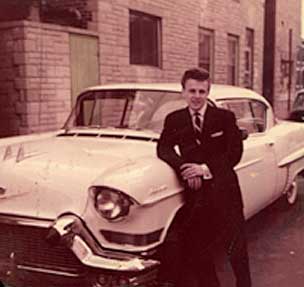
Cochran became a friend. “We were kids, for God’s sake. 20-21 years old. Eddie Cochran was my buddy. A good lookin’ kid, and a talented kid. I’d just sit backstage, and he’d say, ‘Charlie, show me some of them licks you’re playing!’ Because he was just starting out. He was two years younger than me. Nice kind. At the time, he had a song called ‘Sittin’ In The Balcony,’ which was one of my favorites. And he had ‘Summertime Blues,’ which was his big hit. He was in my home in South Philly. My mother used to make him the red sauce, being Italian. He used to love it. Him and Jerry Capehart, his manager. The kids would come out. They were coming out for me, ‘cause I used to play ball with them. They came out for Eddie. Good-looking kid. He had everything going for him.”
For Charlie’s all-important followup, Mann and Lowe conjured up the charming rocker “Fabulous,” cut in April of ’57 and a Top 20 pop seller that summer. “They picked all the material,” says Gracie of the label heads. “Listen, I’m 21 years old. I’m not going to argue with these people. They’re the ones running the show. ‘How do you like it, Charlie?’ ‘Oh, I like the tune!’ I mean, they would ask me if I liked them.”
The duo was also responsible for the B-side, “Just Lookin’,” another savory upbeat outing boasting typically effective backing from Cameo’s house band. Pianist Lowe usually recruited bassist Joe Macho, drummer Jerry Kilgore, and saxist Dan Dailey (aka Fred Nuzzullio) to back the diminutive teen idol, with Joe Sgro or Dave Appell on rhythm guitar. Appell and his Applejacks usually provided backing vocals; several were also in the band. “They were wonderful. I worked with them as a kid, opposite them in nightclubs,” notes Gracie. “They used to be a four or five-piece band.” Lowe’s studio expertise was undeniable. “He was qualified. He knew what he wanted in the studio, and the guy that was his studio man at the time, Emil Korsen, he was a great engineer,” says Charlie. “He knew how to cut records.”
Co-starring on Alan Freed’s rock and roll package shows brought Charlie into close proximity with the legendary deejay. “A guy said to me, ‘Charlie, Alan wants to see you. Take your guitar!’” he remembers. “I said, ‘What the hell does this guy want? Take my guitar? I just did like four shows!’ (Alan said) ‘Charlie, just sit and play for me, will you?’ I said, ‘You gotta be kidding!’ ‘No, I love the way you play, man!’ There weren’t too many guitar players in those days that could play. Chuck a little bit, and Bo Diddley, mostly chords. So I would sit and play for the guy. I thought he was bananas until I found out that he appreciated me.”
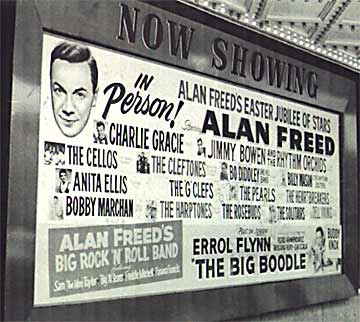
Charlie’s next Cameo release was a departure: “I Love You So Much It Hurts” was a tender ballad that had been a Top Five country hit in 1948 for its composer Floyd Tillman and a C&W chart-topper the next year for Jimmy Wakely. “I picked that one because my mother was a great country fan,” says Gracie. “My father was more into jazz and bebop and all that stuff. I always heard those guys singing that tune. There must have been 200 different recordings of that. I said, ‘This is a great song!’ (Cameo said) ‘Okay, we’ll use it as a B-side.’ Well, it happened to be an A-side, but it didn’t do much in America, because at that particular point the company and I were having trouble. I couldn’t get my records played. But it did very well for me in Britain.” Mann and Lowe supplied the peppier flip, “Wanderin’ Eyes.”
http://www.youtube.com/watch?v=t_Sq0FnTH3k
http://www.youtube.com/watch?v=Z6sYzlZ0NN8

As England embraced rock and roll, Charlie became a star there as well. “Butterfly” had been a big hit in the U.K., and “Fabulous” did even better during a 16-week run on the British charts. That August, Gracie ventured across the pond for a historic concert tour, only the second American rocker to make the jaunt following Bill Haley and His Comets. “I couldn’t believe I got booked there to begin with,” he says. “I went by ship the first time. It took seven days. It was on the Mauretania, a beautiful 38,000-ton vessel. It took us a week to get there.
“The next morning we landed in Southampton, England, where I did my first show. I worked with the great Ted Heath orchestra. He was the Stan Kenton of Europe. Wonderful. But that was the highlight, because then when I went to the provinces, the musicians weren’t as sharp as he was. He had a great jazz band. So it was tough to play rock and roll with a pit orchestra. The orchestra was in the pit. They weren’t on the bandstand with me. It was very difficult. So I had to set the guitar on 10, like sawing wood, and I had to bring my own amplifier. They didn’t even have an amplifier. (Mine needed) a transformer because the electricity’s different there. You had no monitors or anything. You sang though the mic, and your voice came back from the back of the theater. And I did two a day, seven days a week.”
That August 26, stage manager Bill Lee recorded Gracie’s performance at the Globe Theater in Stockton-On-Tees. Reissued several times, including a CD on the Schoolkids logo, the tape shows Charlie ripping through “Tutti Frutti,” “Long Tall Sally” and “Flip Flop And Fly,” his own hits (both “Wanderin’ Eyes” and “I Love You So Much It Hurts” were huge sellers in England), and the blistering instrumental “Guitar Boogie.” “That was pretty tough,” he says. “When you play that, you should have a nice driving bass. I mean, the band was in Chicago and I was in Pittsburgh! I just turned it way up, you know what I mean? That’s all I could do. Don’t forget, we had no reverb units in those days on the amplifiers. It was a flat-sounding guitar.”
The British tour and a return trip the following year that doubled as his honeymoon to wife Joan left Gracie with an extremely devoted fan base that included a lot of future rock stars. “I’m 21, and these kids are 14-15-16, screaming their brains out like I was Elvis Presley or something, because they never saw a guy sing and play the guitar,” says Charlie. “Half the time, I couldn’t even hear what the hell I was doing.
“In the audiences, unbeknownst to me, are the Rolling Stones, the Beatles, Joe Cocker, Graham Nash, on and on and on. All these guys that became famous later. So when I meet them, they go, ‘Charlie, we all came to see you. You are an inspiration. And if it wasn’t for guys like you, guys like us wouldn’t have ever got rich!’”
Trouble was brewing before the release of “I Love You So Much It Hurts,” explaining why it only made a minor blip on the U.S. charts and why Gracie’s splendid subsequent Cameo releases went nowhere at all. “We had a little disagreement, the company and I,” he says. “I just couldn’t get another hit again, because I think when I sued Cameo for my royalties, which I didn’t think I got properly, I got blackballed in the business. Dick Clark was a partner in the company. And I never went on Bandstand again. My records wouldn’t get played.”
That’s the best explanation for the domestic failure of “Cool Baby,” the marvelous Otis Blackwell-penned rocker that Gracie mimed in the 1957 movie Jamboree (his loyal British fans propelled it onto the hit parade there). “I was hot, and they wanted to put this film together. I think Dick Clark had something to do with the production of it. And they were picking the guys that had all the top hits at that time. It was me, Jerry Lee Lewis, Fats Domino, Carl Perkins—it was quite a wonderful bunch of artists in that,” he says. “It was a great song.” No less memorable was the pounding flip, “You Got A Heart Like A Rock,” complete with a tasty Gracie guitar solo midway through. “That’s a good tune,” he says.
Mann and Lowe wrote the crisp rockers that comprised Charlie’s next Cameo offering in early ’58, “Crazy Girl” and “Dressin’ Up,” as well as half of his last single for the firm, “Love Bird.” Gracie gave the vintage Billy Vaughn-authored ballad “Trying” a whirl on the other side. “The only one I picked was ‘Trying,’ that ballad that the Hilltoppers had, because I thought it was a great tune,” he says. Several promising masters—“Baby You’ve Changed,” “Yea Yea (I’m In Love With You),” “Snuggle Up Baby,” a storming cover of Carl McVoy’s Memphis gem “Tootsie”—were buried in the vaults, unavailable stateside for decades until they surfaced on ABKCO’s indispensable 2006 CD The Best of Charlie Gracie—Cameo Parkway 1956-1958.
Although Gracie was no longer scoring major hits, other record companies were eager to bring him on board after Cameo bid him adieu. Lowe and Mann would enjoy spectacular early ‘60s success with dance fare by Chubby Checker, Bobby Rydell, the Dovells, Dee Dee Sharp, and the Orlons, some on their Parkway subsidiary. Charlie found his way to Coral Records, a Decca logo, working with A&R man Dick Jacobs (he handled Buddy Holly and Jackie Wilson).
“I had a friend of mine in New York that worked at Shapiro Bernstein Music. His name was Al Gallico. He became a pretty big name in the country field, a publisher. And he said, ‘Charlie, I was talking to Dick Jacobs the other day,’” he says. “Dick Jacobs was a great A&R man.” At the beginning of ’59, Coral issued Charlie’s “Doodlebug” b/w “Hurry Up, Buttercup,” followed that May by the ebullient “Angel Of Love.” “Great song!” says Gracie (“I’m A Fool, That’s Why” occupied the opposite side). After one more Coral offering that autumn (“Oh-Well-A” b/w “Because I Love You So”), Gracie was on the move again, this time to Morris Levy’s New York-based Roulette Records.
“Al Gallico, see, this guy was really a powerful man, especially in country, like in Nashville, that area,” he says. “When nothing happened with Coral, and I’m looking for labels, he says, ‘Charlie, I’ve got a connection with Roulette. You want to?’ I said, ‘I’ll record for anybody! What do I care, man? Let’s keep it going. Maybe I’ll get lucky again.’ But I never did.
“I cut that in Nashville,” he says. “I was at Owen Bradley’s studio before Nashville was the in place to record. I cut a couple of sides there with Joe Reisman, a great A&R man for Roulette. I got a playback, I’m listening to my thing, they played it back, and I felt this presence behind me. And I turned around, and who the hell do you think it is? Eddy Arnold. I almost died! I couldn’t even talk. I was in awe of him. What a great performer.”
Burt Bacharach and Hal David had the briefest of track records when they penned the bouncy “I Look For You,” half of Gracie’s first Roulette single in the spring of 1960. “What a great song,” he says. “Burt Bacharach, what a great writer. You know, I’ve always been either too early or too late. Just before he became a great famous writer, I recorded one of his tunes on Roulette.” Harboring no grudges, Gracie grabbed hold of a driving Kal Mann tune, “The Race,” for the other side. “It was on the order of ‘Mack The Knife,’” notes Charlie, referring to the way its key raised on every chorus. His Roulette encore twinned “Sorry For You” (Charlie co-wrote it) and the catchy “Scenery” prior to Christmas before the label sent him on his way.
The London Records-affiliated Felsted label pacted Gracie for an unusual ‘61 single. The A-side was a rock and roll adaptation of the Tin Pan Alley chestnut “Makin’ Whoopee,” the work of lyricist Gus Kahn and composer Walter Donaldson, complete with Buddy Holly-style hiccups. “That was my idea. I’ll take the credit for that. I was farting around in the studio. The guy said, ‘Charlie, that’s great! Let’s do it like that!’ I said, ‘Okay, fine!’” says Gracie. “It’s such a great song, you can’t kill that song. Don’t forget, Eddie Cantor made that famous in the ‘20s.”
The other side was even less conventional. Gracie’s fans could be forgiven if they weren’t sure he was actually participating on the largely instrumental “W-Wow,” where he threw in vocal interjections imitating cartoon character Porky Pig. As you might expect, the zany workout was a product of “horsin’ around in the studio,” says Gracie. “The guy said, ‘You know what, Charlie? That’s a great novelty thing. Let’s cut it like that!’ So I did.”
Charlie brought “W-Wow” to Dick Clark hoping for Bandstand airplay, but it was a no- go for an unexpected reason. “‘Charlie,’ he said, ‘that’s a great record. The only problem is, I can’t play it.’ I said, ‘Why?’ He said, ‘Because it’s making fun of people that stutter!’ I said, ‘Wait a minute, Porky Pig’s been a star for 50 years! That’s Porky Pig. I’m not making fun of anybody.’” Alas, Clark couldn’t be persuaded.
Marv Holtsman’s President Records welcomed Charlie onto its roster in 1962, offering him unprecedented freedom in the studio for his first single, pairing the rockers “Night And Day U.S.A.” and “Pretty Baby.” “I wrote that one,” he says. “That’s the only one I produced myself. I put the studio together, I got the musicians together, I arranged it. I was kind of proud of myself because I did it all alone, but nothing ever happened with it.
“I cut three records for them. One they released and one they put in the can and I’ve never heard it since. I wrote it for my daughter Angela. It was a cute little tune, and I have no idea where it’s at. Probably on some shelf somewhere in New York.” President never got around to releasing “Angela,” but to Gracie’s chagrin they did issue “Just Like Us (Come Noi),” Billy Mure handling orchestra direction.
“I cut one bad record in my life, when I was with President,” says Gracie. “And the guy was putting money up for the date, and there was a song from Italy called ‘Just Like Us.’ It wasn’t for me at all. It was like for Mario Lanza. He said, ‘You gotta sing it, Charlie. They won’t put the money up.’ And it’s the only bad record I made in my life. I tried my best singing it, but it wasn’t for me, man. Like semi-operatic.”
Changing his sound to fit the times, Gracie waxed “He’ll Never Love You Like I Do,” a one-off for Joe Kolsky and Phil Kahl’s Diamond Records in 1965 that found him working with busy Philly producer Jerry Ross (he went on to helm major hits for Jay and the Techniques, Dee Dee Warwick, Spanky and Our Gang, Bobby Hebb, and plenty more). “Jerry’s a great guy. I love Jerry, and we still talk once in a while. And Joe Renzetti was the guy that put it together,” says Gracie. “We got together and said, ‘Let’s try something different.’ And I thought it came out pretty good. But once again, I got no plays.”
The single eventually found an audience. “Unbeknownst to me, over in Britain, somebody was playing it underground,” he says. “It became like an underground blue-eyed soul thing. Which I never got paid for, but I understand it sold some records there.” The Renzetti-penned flip “Keep My Love Right Next To Your Heart” was just as danceable.
http://www.youtube.com/watch?v=anMfOT6uKZU
Meanwhile, those lads that idolized Charlie when he visited British shores in 1957-58 were all grown up by then and making smashes of their own. They never forgot the impact of Gracie’s personal rock and roll invasion of their homeland. Gents like Paul McCartney paid tribute in 1999 by reviving Charlie’s “Fabulous.”
“When I met Paul McCartney a few years back, I was invited to a VIP party he had. And I’m on tour at this point in Britain, doing my own tour,” says Charlie. “So finally this guy comes out from some back room, and he grabbed me by the hand–it was his manager—and pulled me through the crowd like a six-year-old kid. ‘Come on, he wants to see you. Now, Charlie, now!’ I’m tripping over myself. So anyway, I walk in backstage, and a couple of big bodyguards are there. Turned the corner, and he’s right there, big as life. ‘Hey, Charlie Gracie!’ ‘Hey, Paul!’ He said, ‘Charlie, I came to see you when I was 16 years old, when you played Liverpool, England. My God, I was astounded by your talent!’ Don’t forget, he was only a kid.”
Then there’s Graham Nash. “We met, and he says, ‘Charlie, I came to see you in Manchester, England, my sister and I, in 1957.’ He said, ‘We waited for after the set, we knew what hotel you were at and we came to the hotel,’” says Charlie. “He said, ‘You signed my autograph. You signed my record. And you were smoking Camels at the time. You must have thrown your butt out. My sister picked it up. Until this day, she still has it saved!’
“So he says, ‘It’s payback time, Charlie!’ I said, ‘What do you mean by that?’ He said, ‘I understand you’re cutting a new album. I’d like to do something on it with you.’ ‘Of course! My God, I’m so honored.’ So we did harmony. He’s on my last two albums,” he says. “I’ve got Peter Noone on my new album too.”
Unlike a lot of his peers, Gracie never faded from prominence. He continues to record and perform. PBS-TV has broadcast Fabulous, a documentary on his career. He’s putting the finishing touches on his autobiography. And Charlie’s itinerary remains as full as he wants it.
“I always worked. That’s the secret of success. I’ve always worked, sang and played the guitar, banjo, bass,” says Gracie. “I can’t complain. I made a nice living all my life. I’ve seen the world. They paid me for it. And I’m respected by my peers. That’s the most important thing. And to me, my fans are everything. I’m out there to please the audience. That’s my job.”



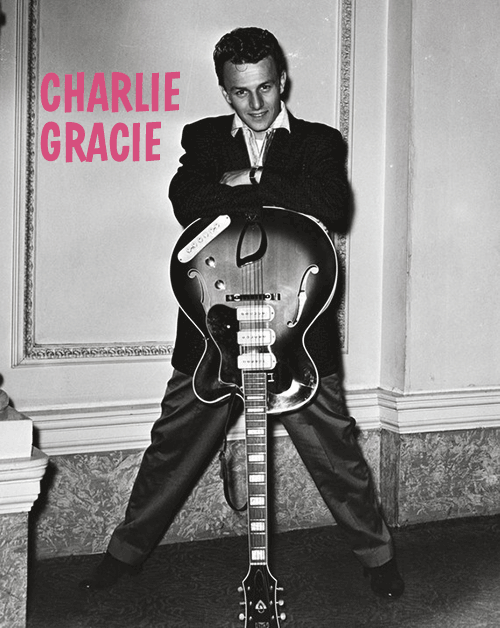
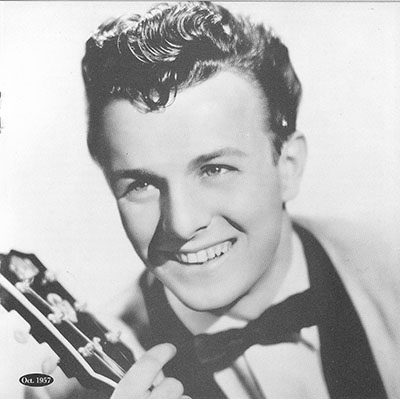
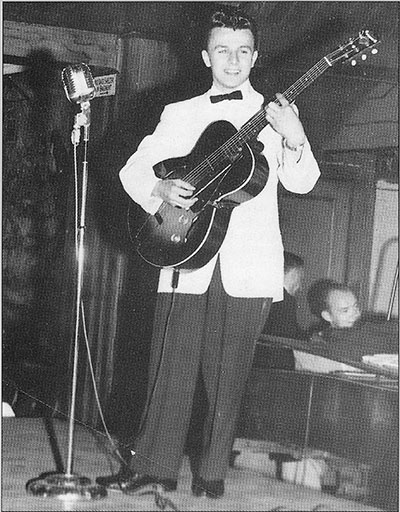
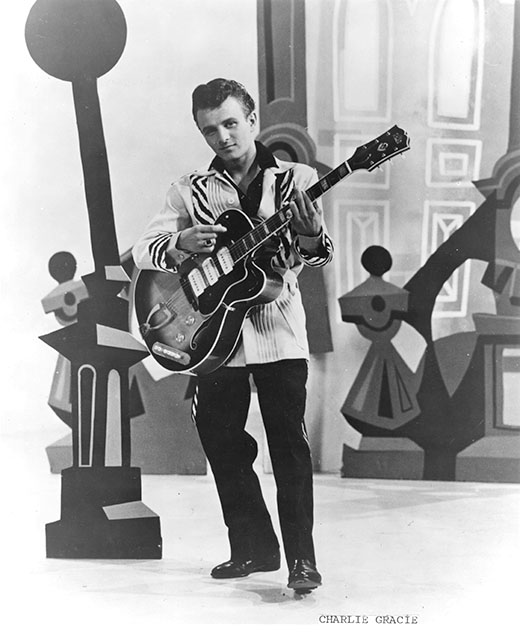
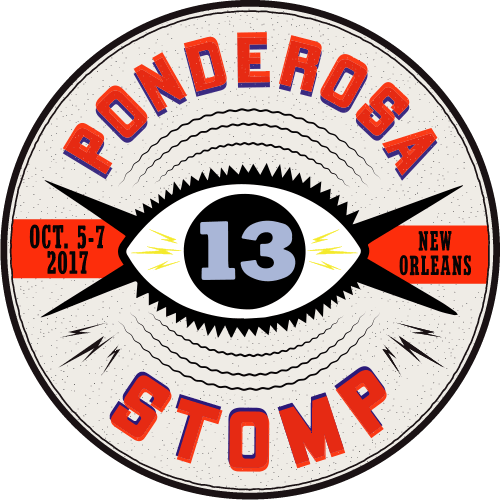
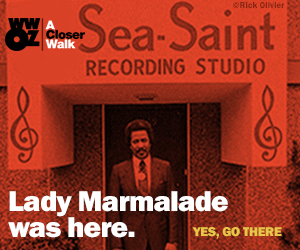
Bill…Thank you for this most enjoyable read…Charlie Gracie deserves as much recognition as anyone in Rock & Roll and you’re enlightening article should convince anyone still unaware of this man’s greatness…Outstanding job,Mr. Dahl
It only took me 50 years but I finally had the pleasure of meeting and hearing Charlie in person at the Ponderosa Stomp this October 2013 in New Orleans. What a performer and so very kind to his fans. A classy man!
I hope he returns.
This is a great piece about Charlie. We’ve been working with him on his memoir and he is such a great guy. You have done a great service to him and his talent with this piece. Thank you.